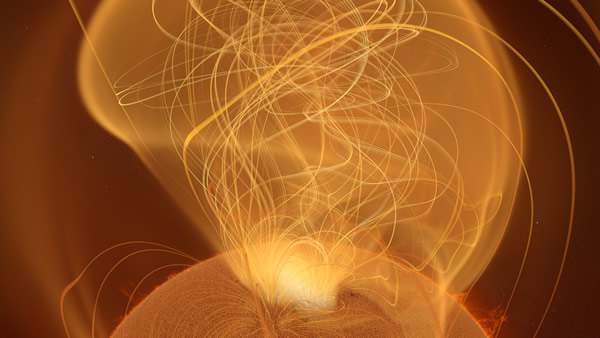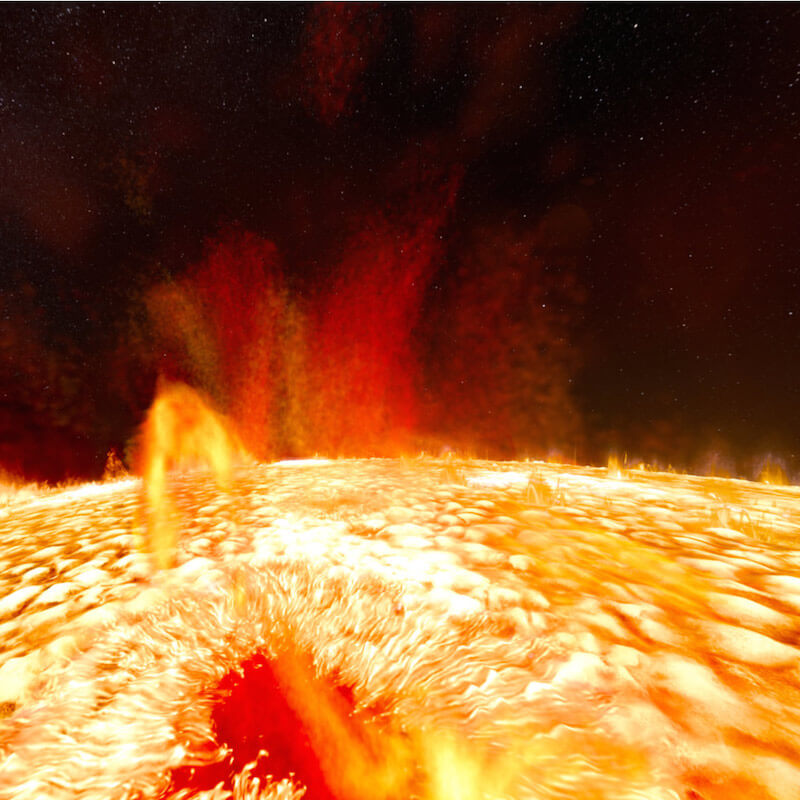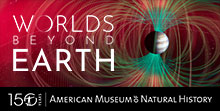New Fulldome Show from Spitz, “Solar Superstorms,” Ready to Brighten Planetariums Around the World
When Spitz Creative Media announced that it was going to produce a new fulldome show titled ‘Solar Superstorms,’ we were ready to lease it based simply on the description.
With those words, Dionysios P. Simopoulos, Director Emeritus of Eugenides Planetarium (Athens) echoes the response Spitz has been hearing from planetarium directors around the world.
Narrated by Benedict Cumberbatch, Solar Superstorms is a 24-minute, high-resolution science documentary produced for the dome, about the dynamics of the Sun and how it can affect Earth’s communications infrastructure. The show features visualizations of cutting edge supercomputer simulations - a signature element of productions from the team of Spitz Creative Media, the Advanced Visualization Lab at the National Center for Supercomputing Applications and Thomas Lucas Productions.
Full Preview
Solar Superstorms was produced in association with Fiske Planetarium at the University of Colorado, Boulder. The project was made possible with support from the Commonwealth of Pennsylvania and the Pennsylvania Film Office, and funding by the National Science Foundation (NSF) through the CADENS project spearheaded by Dr. Donna Cox. CADENS, or the “Centrality of Digitally Enabled Science,” is a ground-breaking initiative designed to showcase deep scientific explorations now possible by a new generation of supercomputers.
As CADENS’ first completed project, Solar Superstorms asks the question, “What can cause our normally benign sun to erupt in such fury that it can threaten the world’s power and technological infrastructure?” To answer that question, this innovative show takes audiences into the inner workings of our star. It follows the path of hot electrified gas as it rises from the Sun’s core, through its tangled journey through the Sun’s volatile outer layers, and on to explosive magnetic eruptions so powerful they can reach Earth.

A blast of electric current, magnetic field, and hot plasma rises up from the solar surface in a Coronal Mass Ejection. Credits: CME simulation by Yuhong Fan; solar surface simulation by Matthias Rempel, both from National Center for Atmospheric Research. Visualization by National Center for Supercomputing Applications.
Solar Superstorms will premiere to the public in North America on June 30 at the Irene W. Pennington Planetarium at the Louisiana Art & Science Museum (Baton Rouge), and in Europe on July 4 at Planétarium Gallilée at Montpellier Méditerranée Métropole in France. It will then roll out to more than a dozen planetariums and science centers around the world. The growing list of initial showcases includes Planetarium Hamburg (Germany), the State Museum of Pennsylvania (Harrisburg), Tellus Science Museum (Cartersville, Georgia), and the Eugenides Planetarium (Athens).
“We are very impressed with this new film,” said Cyril Ruiz of Planétarium Gallilée. “The imagery is of great quality, and the narration is succinct, allowing the audience plenty of room to contemplate the images in this highly immersive medium. We chose ‘Solar Superstorms’ because we wanted a product in line with the theme of the International Year of Light.”
“We will open ‘Solar Superstorms’ as our main feature this fall,” said David A. Dundee, Astronomy Program Manager, Tellus Science Museum. “It will be an option for schools to book as well as our main feature for the public. The science is accurate and clearly presented, and the production quality is excellent.”
Solar Superstorms will premiere to the planetarium industry on June 24, 2015 at Southeastern Planetarium Association (SEPA) conference.
Have you liked this post? Subscribe to FDDB Newsletter
Sign up now, it's free!




















